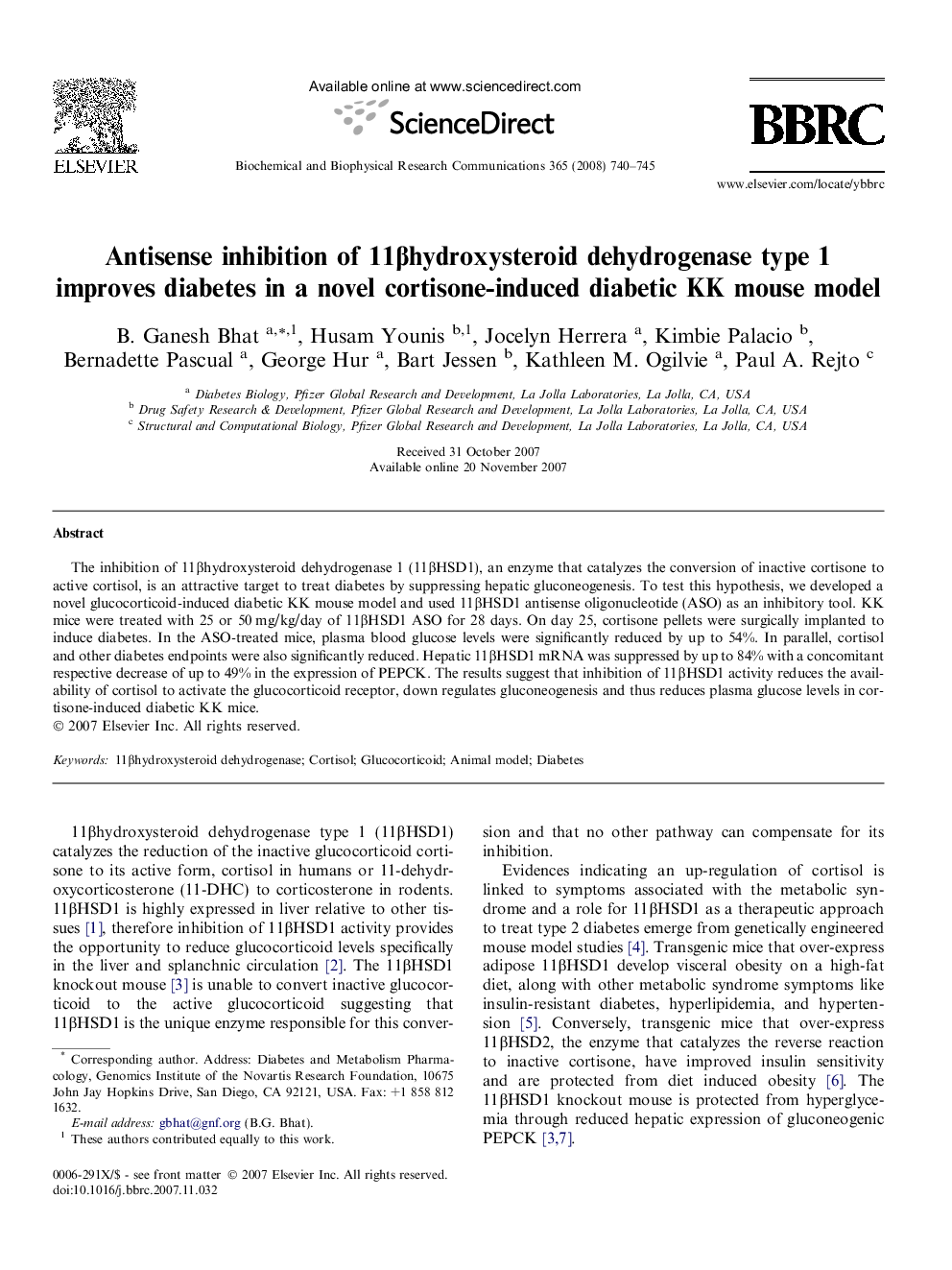| Article ID | Journal | Published Year | Pages | File Type |
|---|---|---|---|---|
| 1936783 | Biochemical and Biophysical Research Communications | 2008 | 6 Pages |
The inhibition of 11βhydroxysteroid dehydrogenase 1 (11βHSD1), an enzyme that catalyzes the conversion of inactive cortisone to active cortisol, is an attractive target to treat diabetes by suppressing hepatic gluconeogenesis. To test this hypothesis, we developed a novel glucocorticoid-induced diabetic KK mouse model and used 11βHSD1 antisense oligonucleotide (ASO) as an inhibitory tool. KK mice were treated with 25 or 50 mg/kg/day of 11βHSD1 ASO for 28 days. On day 25, cortisone pellets were surgically implanted to induce diabetes. In the ASO-treated mice, plasma blood glucose levels were significantly reduced by up to 54%. In parallel, cortisol and other diabetes endpoints were also significantly reduced. Hepatic 11βHSD1 mRNA was suppressed by up to 84% with a concomitant respective decrease of up to 49% in the expression of PEPCK. The results suggest that inhibition of 11βHSD1 activity reduces the availability of cortisol to activate the glucocorticoid receptor, down regulates gluconeogenesis and thus reduces plasma glucose levels in cortisone-induced diabetic KK mice.
